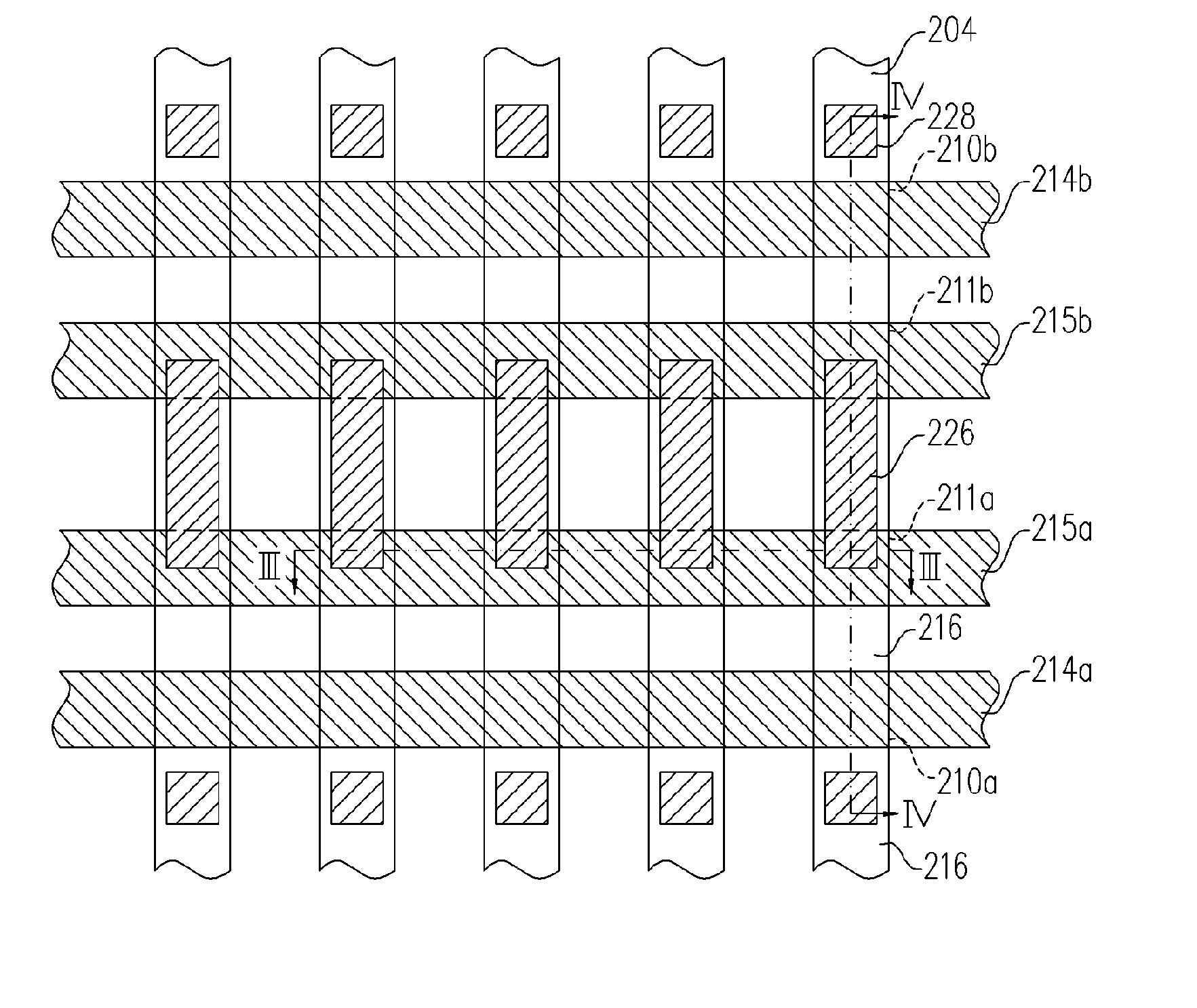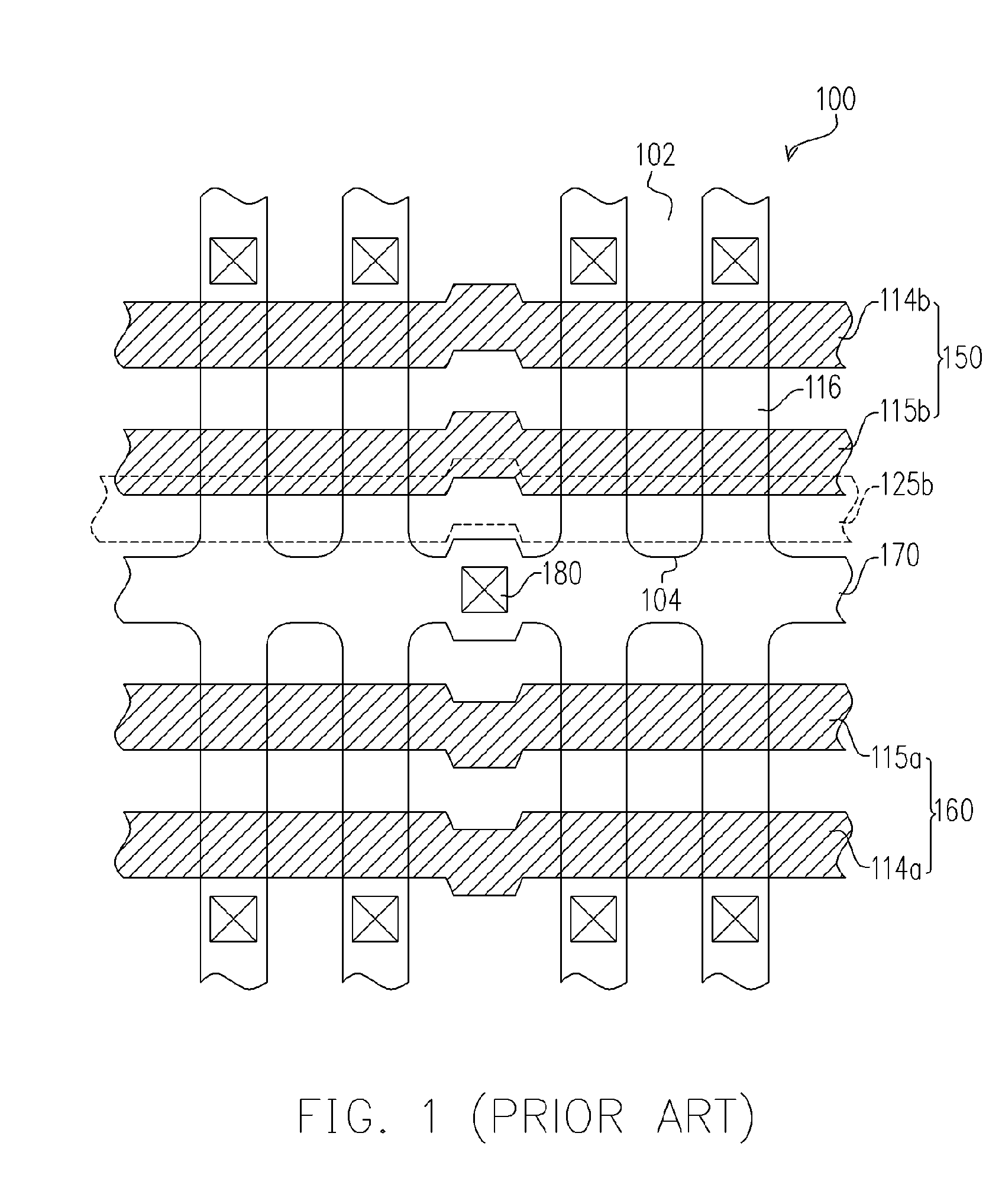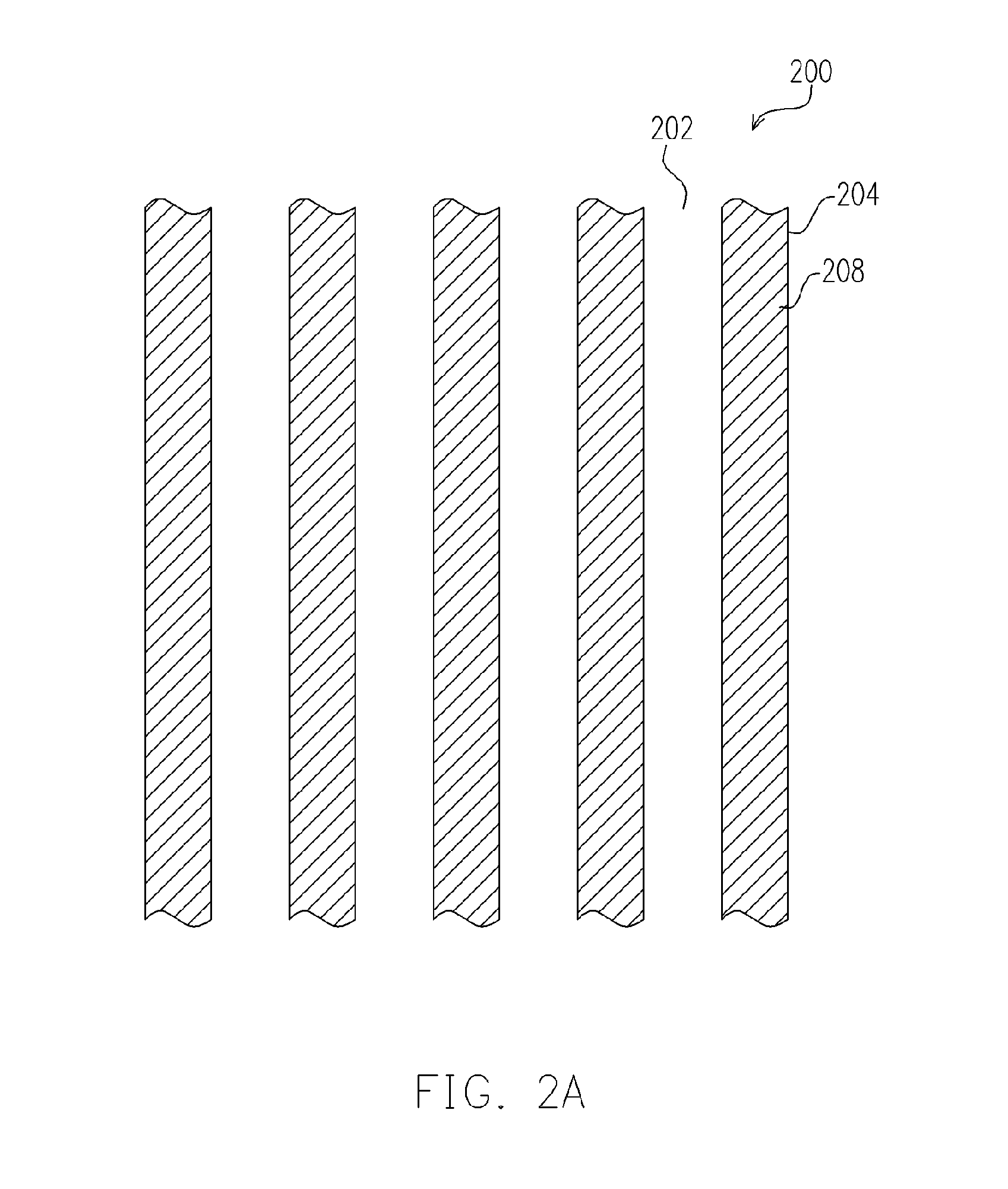Memory device and fabrication method thereof
a memory device and fabrication method technology, applied in semiconductor devices, digital storage, instruments, etc., can solve the problems of consuming more chip areas, affecting the high integration of devices, and complicated fabrication processes, so as to reduce the resistance of source lines
- Summary
- Abstract
- Description
- Claims
- Application Information
AI Technical Summary
Benefits of technology
Problems solved by technology
Method used
Image
Examples
Embodiment Construction
[0025]FIGS. 2A-2D are top views illustrating the process steps for forming a memory structure according to preferred embodiments of the present invention. FIGS. 3A-3D are cross-sectional views illustrating the process steps for forming the memory structure of FIGS. 2A-2D along the line III-III, according to one preferred embodiment of the present invention. FIGS. 4A-4D are cross-sectional views illustrating the process steps for forming the memory structure of FIGS. 2A-2D along the line IV-IV, according to one preferred embodiment of the present invention.
[0026] Referring to FIGS. 2A, 3A and 4A, a plurality of isolation structures 202 is formed in a substrate 200 and defines a plurality of active regions 204 in the substrate 200. The isolation structures 202 can be, for example, shallow trench isolation structures (STI). Preferably, the isolation structures 202 are in strip shapes and arranged substantially parallel to one another, so that the active regions 204 in strip shapes are...
PUM
 Login to View More
Login to View More Abstract
Description
Claims
Application Information
 Login to View More
Login to View More - R&D
- Intellectual Property
- Life Sciences
- Materials
- Tech Scout
- Unparalleled Data Quality
- Higher Quality Content
- 60% Fewer Hallucinations
Browse by: Latest US Patents, China's latest patents, Technical Efficacy Thesaurus, Application Domain, Technology Topic, Popular Technical Reports.
© 2025 PatSnap. All rights reserved.Legal|Privacy policy|Modern Slavery Act Transparency Statement|Sitemap|About US| Contact US: help@patsnap.com



